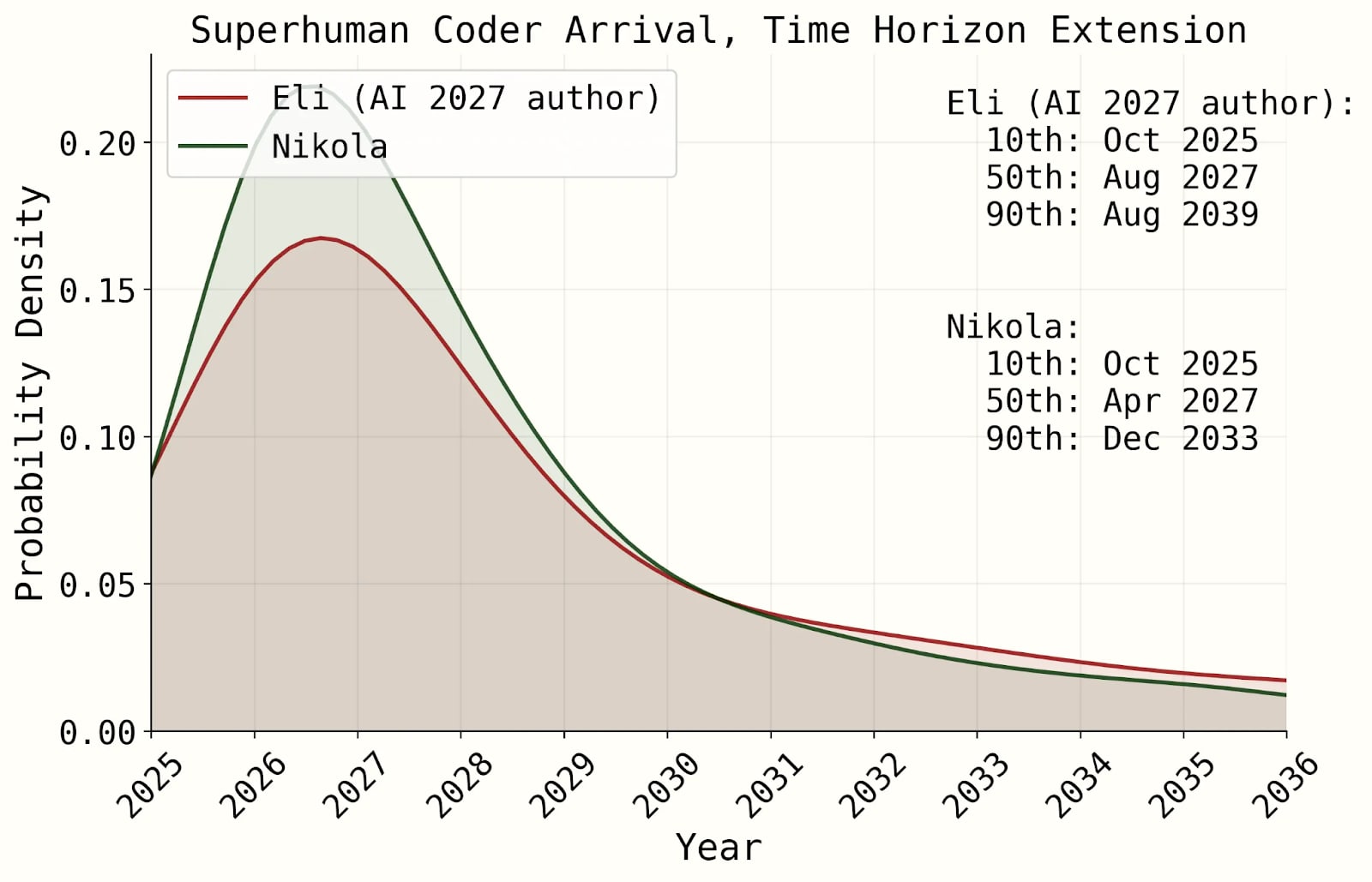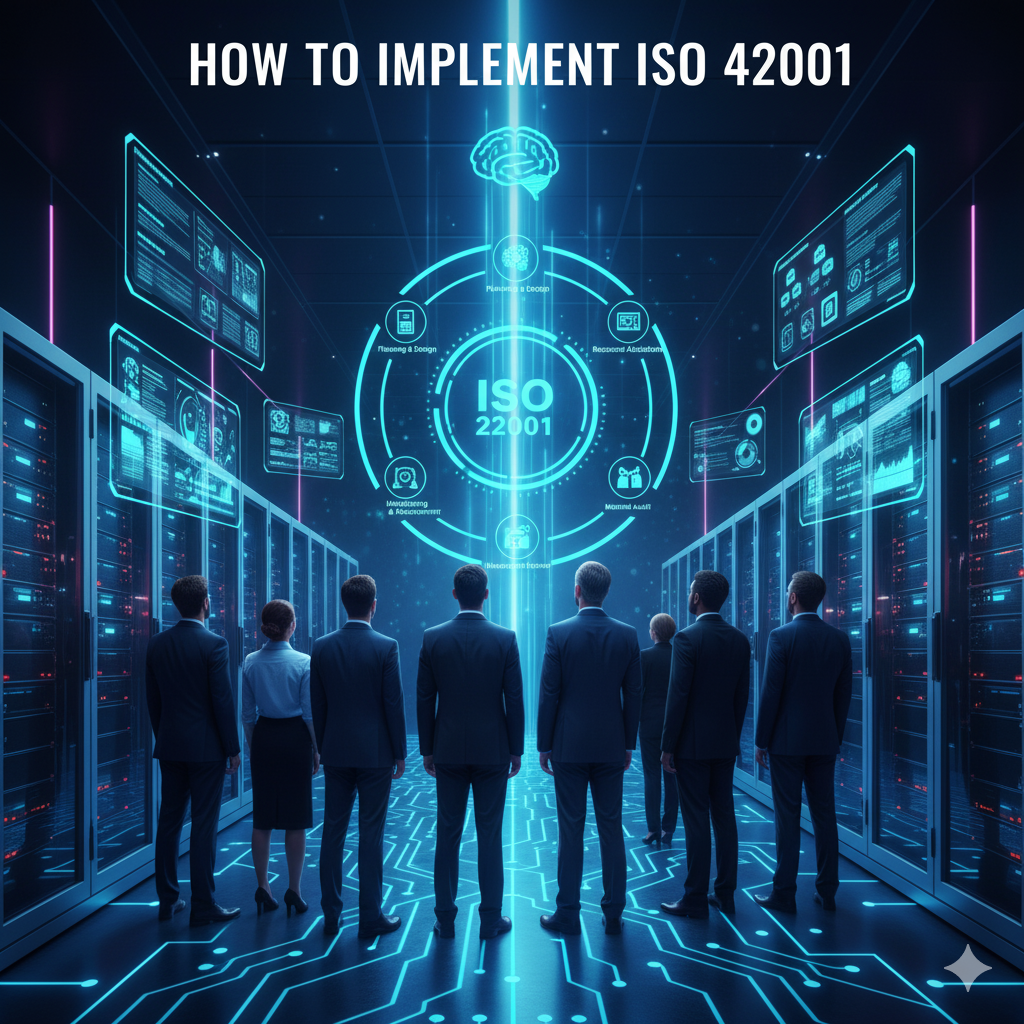A Chief AI Officer is a senior executive responsible for coordinating an organization's artificial intelligence strategy, promoting AI innovation, and managing AI-related risks. Organizations across industries are creating these positions as artificial intelligence transforms business operations at an unprecedented pace. The role has evolved from experimental to essential, with research showing that companies with Chief AI Officers achieve measurably better results from their AI investments.
The question facing business leaders is no longer whether AI will impact their operations, but whether they have the right leadership structure to manage this transformation effectively. Recent data from IBM's Institute for Business Value shows that organizations with Chief AI Officers demonstrate 10 percent higher return on investment on AI spending compared to those without dedicated AI leadership. The Biden administration has mandated that all federal agencies appoint Chief AI Officers, establishing a precedent that influences private sector decision-making across regulated industries.
Source: LessWrong
The rapid adoption of AI technologies creates complex challenges that traditional organizational structures struggle to address. Companies now use an average of 11 different AI models, with plans to expand to 16 models by the end of 2026 according to IBM research. Managing this complexity while ensuring compliance with emerging regulations requires specialized executive oversight that goes beyond traditional technology leadership roles.
What Is a Chief AI Officer and Why Organizations Are Hiring Them
A Chief AI Officer serves as the primary executive responsible for developing and implementing artificial intelligence strategy across an organization. The National Institute of Standards and Technology defines a Chief AI Officer as "a senior executive responsible for coordinating their agency's use of artificial intelligence, promoting AI innovation in their agency, and managing risks from their agency's use of AI."
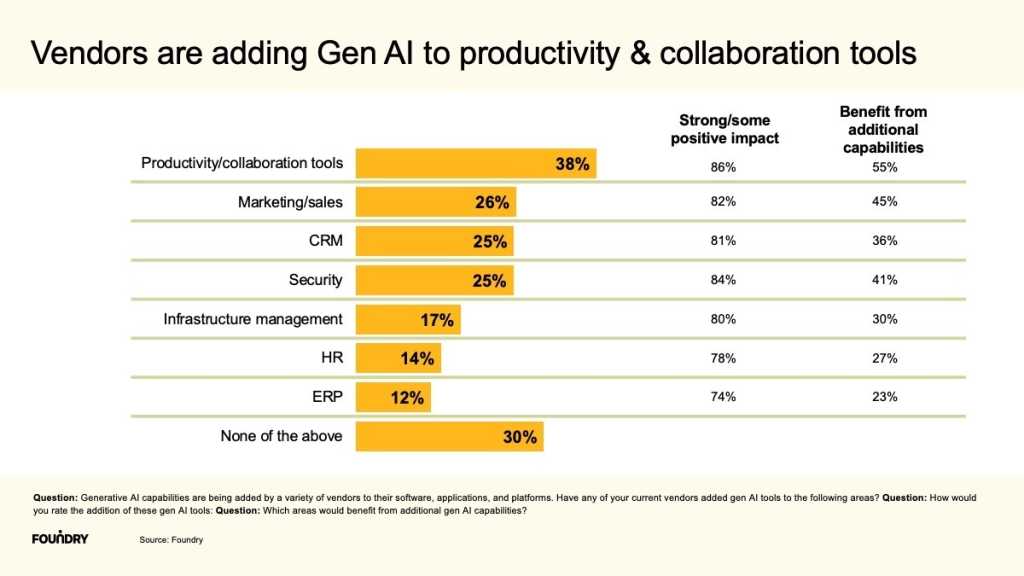
Source: CIO
Organizations are creating dedicated AI leadership roles because artificial intelligence has moved beyond experimental projects to core business functions. The rapid evolution of AI technologies requires specialized executive oversight to navigate technical complexity, business strategy, and ethical considerations. Research from IBM's Institute for Business Value shows that 26 percent of organizations currently have a Chief AI Officer, representing a significant increase from just 11 percent in 2023.
The Chief AI Officer role emerged from recognition that artificial intelligence requires different leadership approaches than traditional technology projects. These leaders address unique challenges AI presents, including rapid technological change, ethical considerations, and complex regulatory requirements through frameworks like responsible AI practices.
Most Chief AI Officers hold positions in the C-suite hierarchy, with 57 percent reporting directly to either the CEO or Board of Directors according to IBM research. This direct reporting relationship reflects the strategic importance of AI leadership rather than positioning it as a technical or operational function.

Source: ResearchGate
The Business Case for Hiring a Chief AI Officer
Organizations with Chief AI Officers achieve measurably superior financial outcomes compared to those without dedicated AI leadership. IBM's Institute for Business Value research found that companies with Chief AI Officers see 10 percent higher return on investment on AI spending globally. This advantage increases to 36 percent higher ROI for organizations where Chief AI Officers drive centralized or hub-and-spoke AI operating models.
Source: PwC
The financial impact extends beyond immediate project returns to broader innovation performance. Organizations with Chief AI Officers are 24 percent more likely to report that they outperform their peers on innovation metrics, suggesting that dedicated AI leadership contributes to sustained competitive advantage.
Budget management represents another area where Chief AI Officers create measurable value. Research indicates that 61 percent of Chief AI Officers control their organization's AI budget, enabling more strategic and coordinated investment decisions. This centralized budget authority allows for portfolio-level optimization, avoiding the fragmented spending patterns that often characterize AI initiatives managed across multiple departments without coordinated oversight.
When Your Organization Needs a Chief AI Officer
Organizations benefit most from Chief AI Officer leadership when they transition from piloting AI projects to implementing enterprise-level AI investments. IBM research suggests that Chief AI Officers become particularly valuable as organizations scale AI initiatives across multiple business units and operational processes.
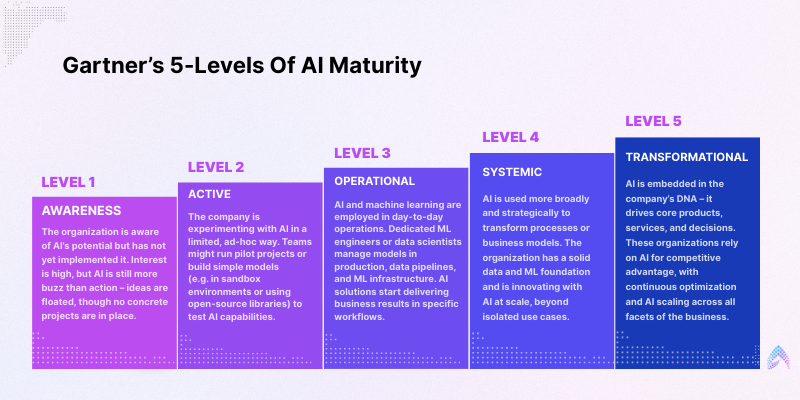
Source: Amzur Technologies
The complexity of AI implementations serves as a key indicator of readiness for Chief AI Officer leadership. Companies implementing sophisticated AI applications such as large language models, predictive analytics, or autonomous decision-making systems require the strategic oversight and risk management capabilities that Chief AI Officers provide through proper AI orchestration.
- Multiple AI model management — Organizations using diverse AI technologies across departments benefit from coordinated oversight
- Cross-functional complexity — When AI initiatives span multiple departments and require coordination between technical and business teams
- Substantial financial commitments — Significant AI investments in infrastructure, talent acquisition, and technology licensing create conditions where dedicated executive leadership becomes valuable
- Regulatory compliance requirements — Highly regulated industries face additional compliance requirements and risk management challenges
Industry-specific factors influence the value proposition for Chief AI Officer positions across different sectors. Highly regulated industries such as healthcare, financial services, and government contracting face additional compliance requirements and risk management challenges that benefit from specialized AI leadership and understanding of AI TRiSM frameworks.
When You Don't Need a Chief AI Officer
Organizations in early stages of AI exploration may not require dedicated Chief AI Officer leadership. Companies conducting basic automation projects, limited AI pilots, or experimental implementations can often manage these initiatives through existing technology leadership structures.
Smaller organizations with limited AI investments and simple implementation requirements may find that integrating AI responsibilities within existing Chief Technology Officer or Chief Data Officer roles provides sufficient oversight. The decision depends on the complexity of AI initiatives, available resources, and organizational capacity to support dedicated executive positions.
Organizations with strong existing technology leadership and clear AI governance frameworks may not need dedicated Chief AI Officer positions immediately. Companies with effective Chief Technology Officers who possess AI expertise and have established comprehensive AI governance processes may achieve similar benefits without creating additional executive roles.
Budget constraints and resource limitations may make Chief AI Officer positions impractical for some organizations. Companies with limited AI investments or constrained executive budgets may need to prioritize other leadership needs before establishing dedicated AI executive positions.
Alternative organizational structures may provide similar benefits without creating dedicated Chief AI Officer positions. Some organizations successfully establish AI steering committees with cross-functional representation, designate existing executives to spend portions of their time on AI strategy, or engage external AI consulting services for strategic AI guidance during development phases.
Key Responsibilities and Skills of Successful Chief AI Officers
Chief AI Officers serve multiple critical functions within organizations, starting with strategic oversight of AI initiatives and investments. The role requires developing comprehensive AI strategies that align with broader business objectives while identifying opportunities for AI-driven value creation across functions like AI agents in sales and customer service.

Source: AWS
Risk management and compliance oversight represent essential responsibilities for Chief AI Officers. The National Institute of Standards and Technology's AI Risk Management Framework emphasizes governance, mapping, measuring, and managing AI-related risks. Chief AI Officers ensure that AI implementations adhere to principles of transparency, fairness, accountability, and robustness while complying with emerging regulatory requirements through proper NIST AI RMF implementation.
Successful Chief AI Officers possess unique combinations of technical expertise and strategic leadership capabilities:
- Technical competency — Sufficient depth to evaluate AI solutions credibly while understanding implementation challenges
- Strategic thinking abilities — Capacity to align AI initiatives with broader business objectives and identify value creation opportunities
- Cross-functional coordination — Skills to partner effectively with other C-suite stakeholders and manage competing organizational priorities
- Ethical leadership capabilities — Understanding of AI ethics, bias mitigation, and responsible AI development practices
- Continuous learning mindset — Ability to stay current with rapidly evolving AI technologies and regulatory landscapes
Cross-functional coordination and stakeholder management represent critical competencies for Chief AI Officer success. IBM research indicates that Chief AI Officers work closely with Chief Information Officers, Chief Technology Officers, Chief Data Officers, Chief Information Security Officers, and Chief Human Resources Officers.
How to Implement Chief AI Officer Leadership Successfully
Organizations implementing Chief AI Officer positions require clear definition of roles, responsibilities, and reporting structures. The strategic positioning of Chief AI Officers within organizational hierarchies significantly impacts their effectiveness, with research showing that 57 percent of successful Chief AI Officers report directly to CEOs or Boards of Directors.
Budget authority and resource allocation represent critical factors in Chief AI Officer implementation success. Research indicates that 61 percent of effective Chief AI Officers control their organization's AI budget, enabling strategic resource allocation and portfolio-level optimization.
Cultural readiness and organizational change management affect Chief AI Officer implementation outcomes. Organizations with strong innovation cultures, tolerance for experimentation, and commitment to continuous learning are better positioned to benefit from Chief AI Officer leadership through proper AI change management. Conversely, organizations with risk-averse cultures or resistance to technological change may need to address cultural barriers before Chief AI Officer appointments can achieve their full potential.
Integration with existing leadership structures requires careful planning to avoid conflicts and ensure effective collaboration. Chief AI Officers work closely with other technology leaders, business executives, and functional stakeholders to coordinate AI initiatives across the organization.
The recruitment and selection process evaluates candidates' combination of technical competency and executive leadership capabilities. Successful Chief AI Officers combine sufficient technical depth to evaluate AI solutions credibly with strategic perspective necessary to align AI initiatives with business objectives.
Measuring Chief AI Officer Success and Return on Investment
Organizations measure Chief AI Officer success through multiple financial and operational metrics that demonstrate value creation from AI investments. The primary financial indicator is return on investment on AI spending, with research showing that organizations with Chief AI Officers achieve 10 percent higher ROI compared to those without dedicated AI leadership.
Innovation performance metrics provide additional measures of Chief AI Officer effectiveness. Organizations with Chief AI Officers are 24 percent more likely to report outperforming peers on innovation metrics, indicating that dedicated AI leadership contributes to sustained competitive advantage through AI transformation.
- Operational efficiency improvements — Cost reduction, productivity gains, error rate decreases, and process automation achievements
- Risk management metrics — Regulatory compliance rates, incident frequency, audit findings, and stakeholder satisfaction
- Long-term strategic success — AI maturity advancement, competitive positioning relative to industry peers, and development of internal AI expertise
Risk management and compliance metrics offer additional measures of Chief AI Officer value creation. Organizations monitor indicators such as regulatory compliance rates, incident frequency, audit findings, and stakeholder satisfaction to assess the governance and risk management value that Chief AI Officers provide.
Long-term strategic success measurement focuses on sustainable capability building and competitive positioning that creates lasting organizational value beyond immediate project outcomes. Organizations evaluate Chief AI Officer effectiveness through indicators that track AI maturity advancement, competitive positioning relative to industry peers, and the development of internal AI expertise.
Making the Strategic AI Leadership Decision for Your Organization
The decision to hire a Chief AI Officer requires comprehensive assessment of organizational readiness, strategic objectives, and competitive context. Organizations evaluate their current AI maturity, investment levels, regulatory requirements, and existing leadership capacity to determine whether dedicated AI executive leadership will create sufficient value.
Timing considerations affect the optimal approach to Chief AI Officer implementation. Organizations assess whether their AI initiatives have reached sufficient scale and complexity to warrant dedicated executive oversight. Early-stage AI exploration may not require Chief AI Officer leadership, while enterprise-scale AI implementations typically benefit from dedicated executive coordination.
The regulatory landscape surrounding artificial intelligence has evolved rapidly, creating substantial compliance requirements that drive organizational need for dedicated AI leadership. The Biden administration's Executive Order requiring federal agencies to appoint Chief AI Officers has established a regulatory precedent that influences private sector adoption, particularly for organizations operating in regulated industries.
The trajectory of Chief AI Officer adoption suggests fundamental shifts in enterprise leadership structures that will accelerate throughout 2025 and beyond. IBM research indicating that 66 percent of existing Chief AI Officers expect most organizations will have similar positions within two years reflects recognition of structural changes in how organizations manage AI to remain competitive.
Frequently Asked Questions About Chief AI Officers
How much does hiring a Chief AI Officer typically cost organizations?
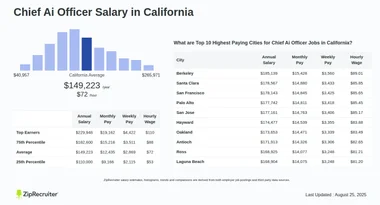
Source: ZipRecruiter
Chief AI Officer salaries range from $250,000 to $600,000 annually, with experienced executives in major markets earning toward the higher end. Technology companies and financial services organizations typically offer compensation at the top of this range.
Total cost extends beyond base salary to include benefits, equity compensation, and team resources. Organizations often allocate $500,000 to $1.5 million annually for the complete Chief AI Officer function, including supporting staff, technology tools, and training programs.
What's the difference between a Chief AI Officer and Chief Technology Officer role?
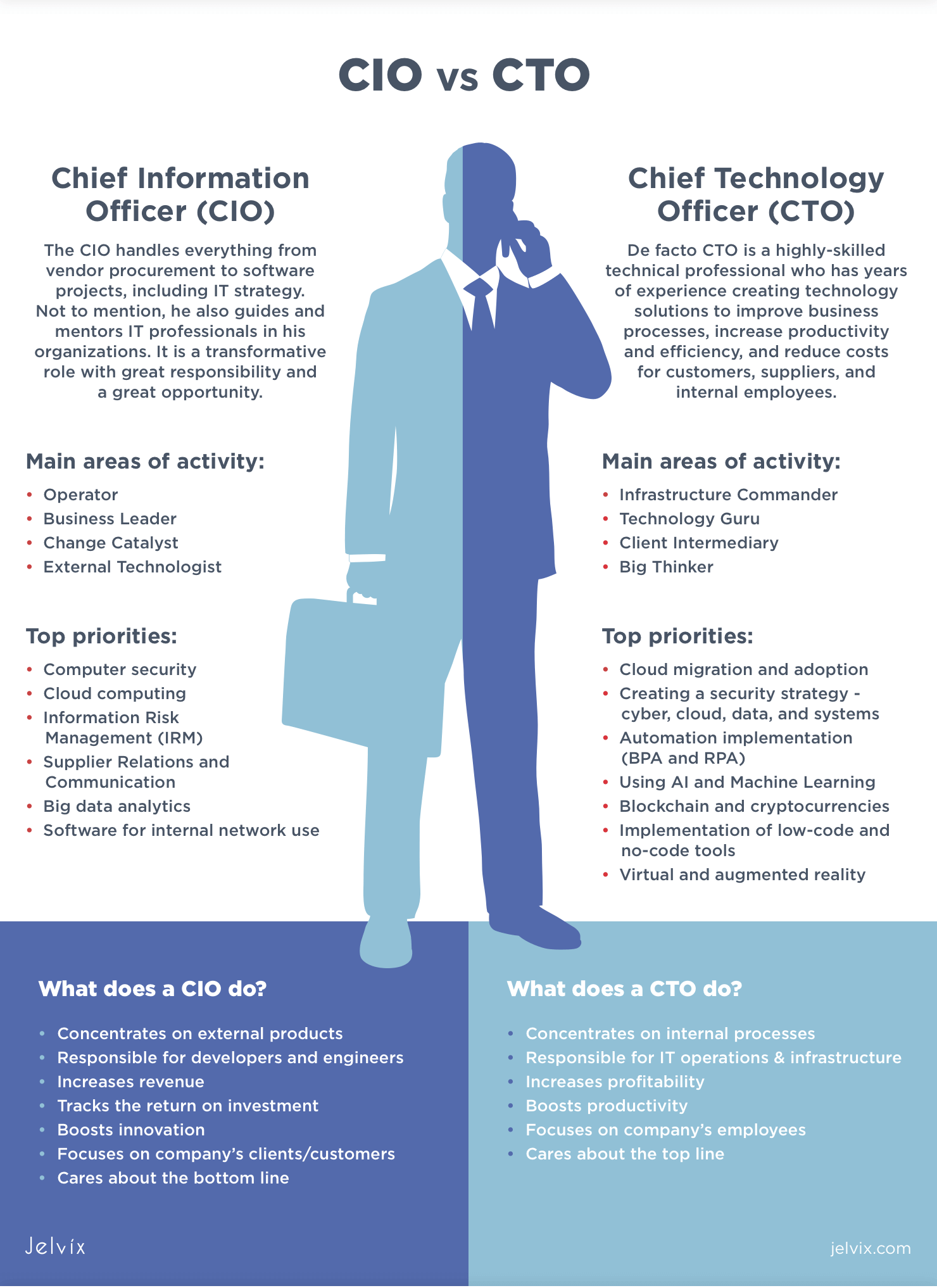
Source: Graph AI
Chief Technology Officers manage overall technology infrastructure, software development, and IT operations across the organization. Their responsibilities span multiple technology domains including networks, security, and enterprise applications.
Chief AI Officers focus specifically on artificial intelligence strategy, governance, and implementation. Chief AI Officers develop AI roadmaps, manage AI ethics and compliance, and coordinate AI initiatives across business units while Chief Technology Officers handle broader technology infrastructure that supports these AI systems.
Can organizations promote someone internally to become their Chief AI Officer?
Internal promotion offers cultural advantages since existing employees understand organizational dynamics, relationships, and business objectives. Internal candidates require less onboarding time and often gain immediate credibility with existing teams.
External hiring brings specialized AI expertise and fresh perspectives on industry best practices. Organizations evaluate whether internal candidates possess technical AI knowledge, strategic vision, and executive leadership skills required for the role. Many companies provide intensive AI training and executive development programs to prepare internal candidates for Chief AI Officer responsibilities.
How long does it take to see measurable results from a Chief AI Officer hire?
Quick wins typically emerge within three to six months as Chief AI Officers establish governance frameworks, audit existing AI initiatives, and identify immediate optimization opportunities. These early results include improved AI project coordination and risk management protocols.
Transformational changes require 18 to 24 months as Chief AI Officers develop comprehensive AI strategies, build organizational capabilities, and implement enterprise-scale AI systems. Research shows organizations with Chief AI Officers achieve 10 percent higher ROI on AI spending, but realizing these benefits requires sustained effort over multiple quarters.
Which executive structure works best for Chief AI Officer reporting relationships?
Direct CEO reporting works best for organizations where AI represents a primary strategic priority or competitive differentiator. Research indicates 57 percent of Chief AI Officers report directly to CEOs or boards of directors, emphasizing the strategic nature of AI leadership.
Alternative reporting structures include reporting to Chief Technology Officers in technology-focused companies or Chief Operating Officers in operations-heavy industries. The optimal structure depends on organizational size, AI strategic importance, and existing executive team composition rather than following standard organizational charts.
The Strategic Imperative for AI Leadership in 2025
The evidence supporting Chief AI Officer adoption in 2025 encompasses measurable financial benefits, risk management capabilities, and competitive advantages that make compelling cases for dedicated AI leadership. Organizations with Chief AI Officers achieve superior outcomes including higher return on investment, improved innovation performance, and better risk management compared to those without dedicated AI executive oversight.
The trajectory of AI technology development, regulatory evolution, and competitive dynamics suggests that Chief AI Officer roles will become increasingly standard across enterprise organizations. The expectation from existing Chief AI Officers that most organizations will have similar positions within two years reflects recognition of structural changes in how organizations manage AI to remain competitive.
Organizations that establish effective AI leadership structures early will be better positioned to capitalize on AI opportunities while managing associated risks, creating sustainable competitive advantages in an increasingly AI-driven business environment. The decision to hire a Chief AI Officer is based on careful assessment of organizational readiness, strategic objectives, and competitive context rather than following industry trends blindly.
As artificial intelligence continues transforming business operations at an unprecedented pace, the question isn't whether organizations need strategic AI leadership, but whether they can afford to operate without it. The data demonstrates that organizations with dedicated AI leadership consistently outperform their peers across multiple dimensions of business performance, making the Chief AI Officer role not just a strategic advantage, but an operational necessity for enterprises seeking to thrive in the AI-driven economy of 2025 and beyond.

